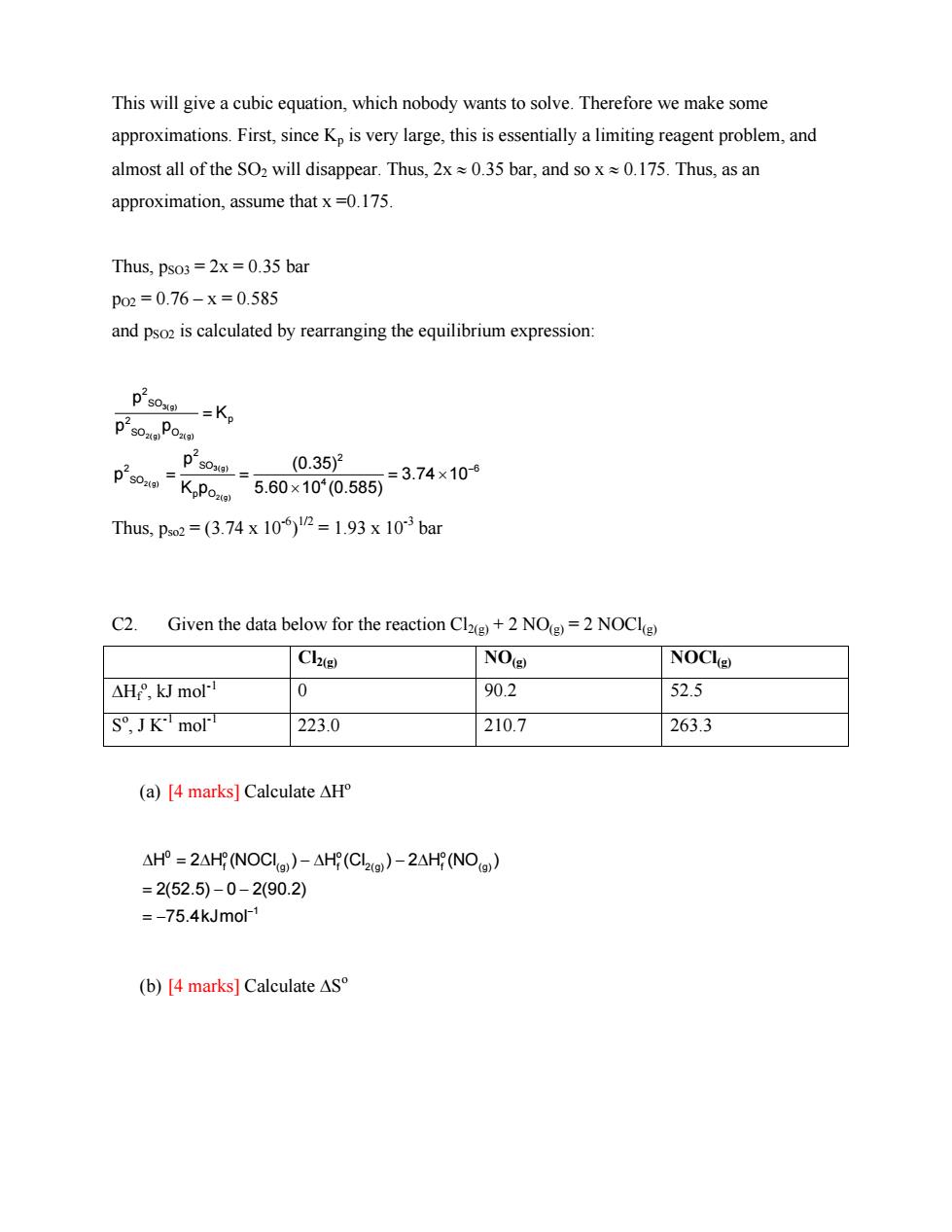正在加载图片...

This will give a cubic equation,which nobody wants to solve.Therefore we make some approximations.First,since Kp is very large,this is essentially a limiting reagent problem,and almost all of the SO2 will disappear.Thus,2x0.35 bar,and so x0.175.Thus,as an approximation,assume that x=0.175. Thus,pso3=2x=0.35 bar po2=0.76-x=0.585 and pso2 is calculated by rearranging the equilibrium expression p2s0x一=K, p290Poao P'so K Po. 91 (0.35)2 5.60x100.5853.74x10 Thus,ps2=(3.74x10P=1.93x10-3ba C2. Given the data below for the reaction Cl+2 NO=2 NOCl) Clae NO( NOClo) △H,kJ mol" 0 90.2 52.5 S,JKmol 223.0 210.7 263.3 (a)[4 marks]Calculate AH △HP=2 AH(NOCI)-△H(CL2g)-2AH(NOa) =2(52.5)-0-2(90.2) =-75.4kJmo (b)[4 marks]Calculate AS This will give a cubic equation, which nobody wants to solve. Therefore we make some approximations. First, since Kp is very large, this is essentially a limiting reagent problem, and almost all of the SO2 will disappear. Thus, 2x ≈ 0.35 bar, and so x ≈ 0.175. Thus, as an approximation, assume that x =0.175. Thus, pSO3 = 2x = 0.35 bar pO2 = 0.76 – x = 0.585 and pSO2 is calculated by rearranging the equilibrium expression: 3(g) 2(g) 2(g) 3(g) 2(g) 2(g) 2 SO 2 p SO O 2 2 2 SO 6 SO 4 p O p K p p p (0.35) p 3 K p 5.60 10 (0.585) .74 10− = = = =× × Thus, pso2 = (3.74 x 10-6) 1/2 = 1.93 x 10-3 bar C2. Given the data below for the reaction Cl2(g) + 2 NO(g) = 2 NOCl(g) Cl2(g) NO(g) NOCl(g) ΔHf o , kJ mol-1 0 90.2 52.5 So , J K-1 mol-1 223.0 210.7 263.3 (a) [4 marks] Calculate ΔHo 0 o o o f (g) f2(g) f( 1 H 2 H (NOCl ) H (Cl ) 2 H (NO 2(52.5) 0 2(90.2) 75.4kJmol− Δ = Δ −Δ − Δ = −− = − g) ) (b) [4 marks] Calculate ΔSo